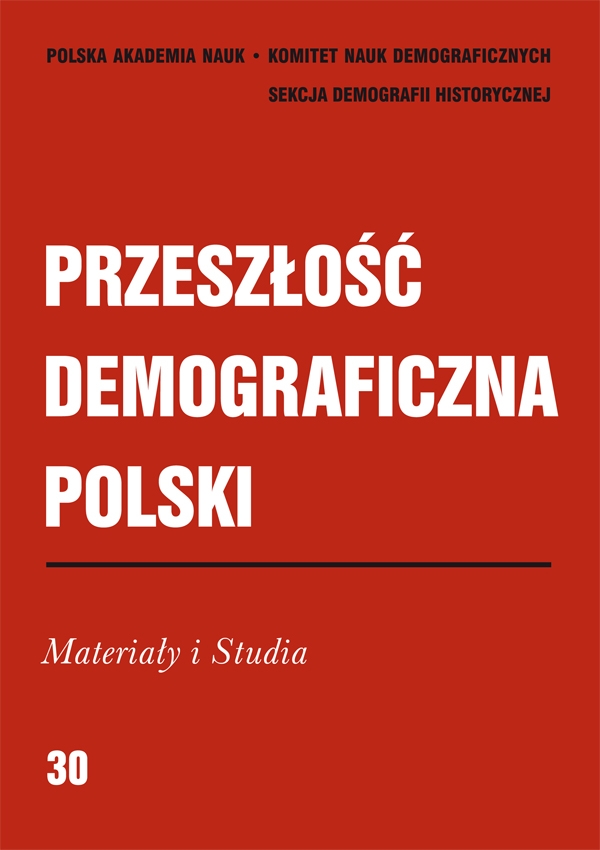Ludność katolicka i ewangelicka Kępna w XVIII wieku
Słowa kluczowe:
demografia, Kępno, katolicy, ewangelicy, księgi metrykalneAbstrakt
The Catholic and Protestant population of Kępno in the 18th century
Kępno lies on the border of Wielkopolska and Silesia. In the 18th century it was part of the Ostrzeszów district in the Sieradz province. The local parish comprised a town and two villages. At that time there were three ethnic groups living in the town: Poles; Protestants from Silesia, mainly Germans; and Jews. The basic occupations of the new inhabitants were crafts they were mostly cobblers, weavers and linen makers and trade.
The analysis is based on birth, marriage and death registers of the Roman Catholic parish of Kępno, in which not only Catholics but also Protestants were listed.
The monthly seasonality of weddings in the parish depended largely on the church calendar and work in the fields. Most marriage ceremonies in both religious groups took place in October, November and January. They were usually held on Sundays and, less frequently, on Tuesdays and Mondays. The ceremonies were witnessed almost invariably by men. Only in exceptional cases would a woman be one of the witnesses. There were also dozen or so marriage ceremonies with three witnesses; in several cases the note “and others” was added. Witnesses were usually people of higher standing or popularity in the local community.
In both religious communities the biggest number of children were born in September and October, the smallest — in June. 2.8% of children were born out of wedlock — most of them were Catholic children. People asked to be godparents were mainly men and women who were popular in the local community.
The distribution of the number of deaths among people living in Kępno and its vicinity was clearly related to the seasons. The number of deaths in the parish was particularly high towards the end of winter and in early spring as well as late summer, a phenomenon characteristic of all urban and rural communities from the 17th–19th centuries studied so far.

